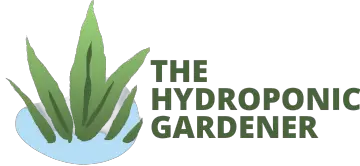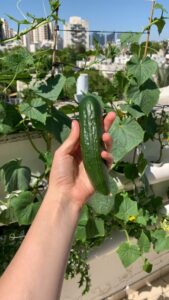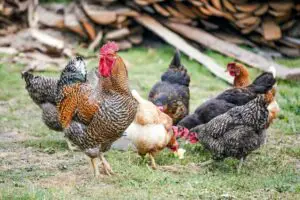Growing a hydroponic vegetable garden can be an exciting and rewarding venture. After years of growing pretty much everything – fruits, vegetables, leafy greens, tea herbs, and flowers – I can tell you that meals prepared by ingredients you grew yourself are the tastiest.
Hydroponic vegetables guide
Here’s a step-by-step guide to help you get started with growing your own vegetables hydroponically:
- Choose Your Setup: Decide on the type of hydroponic system you want to use. Common options include deep water culture (DWC), nutrient film technique (NFT) with its pipes is great for large spaces; drip system, wick system or an easy-to-use Kratky (bucket). Choose a system that suits your space, budget, and level of expertise.
- Set Up Your System: Install your chosen hydroponic system according to the manufacturer’s instructions. Ensure that all components, including reservoirs, pumps, tubing, and growing containers, are clean and in good working condition. Position your system in a location with access to adequate light and ventilation.
- Select Vegetables: Choose the vegetables you want to grow hydroponically. Many vegetables can thrive in hydroponic systems, including lettuce, tomatoes, peppers, cucumbers, and herbs like basil and mint. Consider factors such as space requirements, light needs, and climate suitability when selecting your crops.
- Plant Your Vegetables: Plant your vegetable seeds or seedlings in the growing containers or growing medium of your hydroponic system. Ensure that the roots are in direct contact with the nutrient solution or growing medium to facilitate nutrient uptake. Space plants according to their growth habits and recommended spacing guidelines.
- Prepare Nutrient Solution: Mix a balanced hydroponic nutrient solution according to the needs of your chosen vegetables. Follow the manufacturer’s instructions for proper dilution and nutrient ratios. Monitor nutrient levels regularly and adjust as needed to maintain optimal plant health.
- Provide Lighting: Ensure that your hydroponic garden receives adequate light for plant growth. If growing indoors, use full-spectrum grow lights positioned at the appropriate distance from the plants to mimic natural sunlight. Monitor light intensity and duration to meet the specific needs of your vegetables.
- Monitor and Maintain: Regularly monitor the pH level and nutrient concentration of your hydroponic solution using a pH meter and electrical conductivity (EC) meter. Adjust pH and nutrient levels as needed to prevent nutrient deficiencies or imbalances. Keep an eye on plant health, pest infestations, and environmental conditions, and address any issues promptly.
- Harvest and Enjoy: Harvest your hydroponic vegetables as they mature and reach the desired size. Use sharp scissors or pruning shears to avoid damaging plants. Enjoy the fresh, homegrown produce from your hydroponic garden in salads, smoothies, stir-fries, and other culinary creations.
By following these steps and providing proper care and attention, you can create a thriving hydroponic vegetable garden and enjoy a bountiful harvest of nutritious and delicious produce year-round.
If you wonder about eating the hydroponic vegetables you grow, here are two guides: differences between hydroponic and organic, and are hydroponic vegetables safe to eat?. And if you have a small space indoors, I recommend this system. I wrote about it here.
Vegetables to grow hydroponically
All that being said, “Vegetables” is a broad definition, so let’s break it down. Here are some ideas for vegetables it’s fun and easy to grow hydroponically at home.
Tomatoes
- Temperature range: 65-77°F (18-25°C)
- Lighting: 8-10 hours of direct sunlight or equivalent grow lights
- Days until harvest: 60-80 days
- Recommended pH level: 5.5-6.5
- Use: Tomatoes are versatile and can be enjoyed both cooked and raw in various dishes, from salads to sauces.
Cherry Tomatoes
- Temperature range: 65-77°F (18-25°C)
- Lighting: 8-10 hours of bright light daily
- Days until harvest: 55-75 days
- Recommended pH level: 5.5-6.5
- Use: Cherry tomatoes are often eaten raw in salads, but they can also be roasted or cooked in dishes for a burst of flavor.
- Read more: how to grow hydroponic cherry tomatoes

Eggplants
- Temperature range: 75-86°F (24-30°C)
- Lighting: 8-10 hours of direct sunlight or equivalent grow lights
- Days until harvest: 100-120 days
- Recommended pH level: 5.5-6.5
- Use: Eggplants are usually eaten cooked and can be prepared in many ways, including baking, grilling, and frying.
- Read more: how to grow eggplant
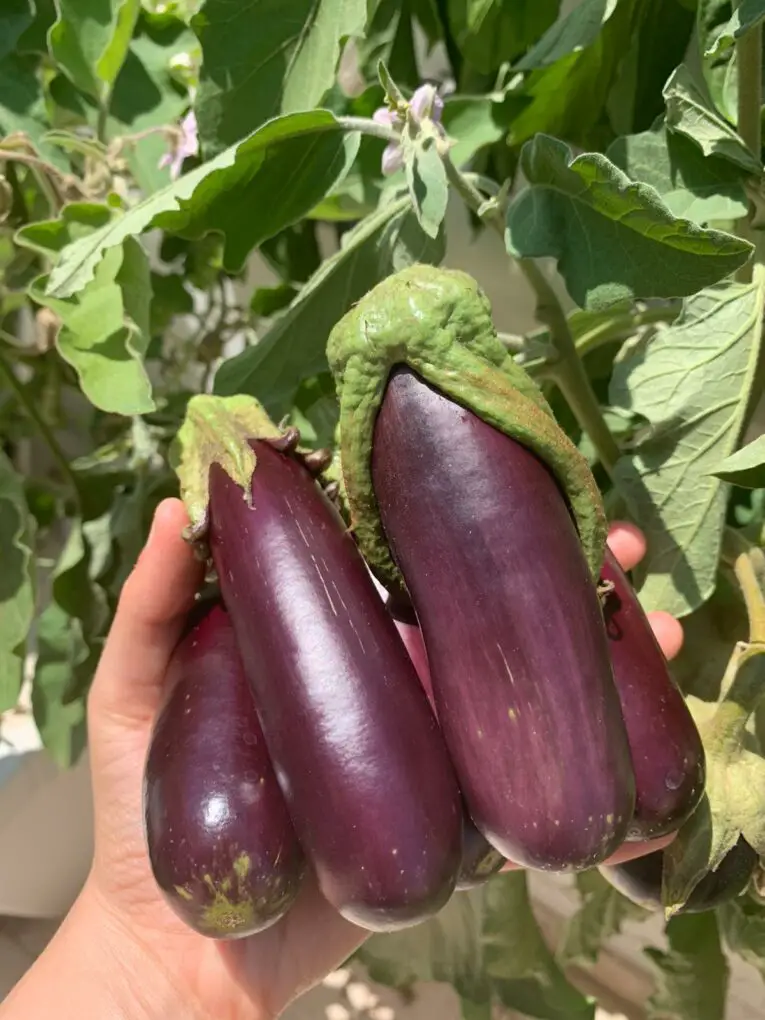
Cucumbers
- Temperature range: 72-82°F (22-28°C)
- Lighting: 14-16 hours of bright light daily
- Days until harvest: 50-70 days
- Recommended pH level: 5.5-6.0
- Use: Cucumbers are typically consumed raw, adding a refreshing crunch to salads or served as a garnish, though they can be pickled as well.

Broccoli
- Temperature range: 65-75°F (18-24°C)
- Lighting: 6-8 hours of direct sunlight or equivalent grow lights
- Days until harvest: 65-85 days
- Recommended pH level: 6.0-6.8
- Use: Broccoli can be eaten both raw and cooked. It’s delicious raw in salads or as a snack with dip, and cooked in stir-fries, soups, and casseroles.
- Read more: how to grow hydroponic broccoli
Beans (Bush Beans)
- Temperature range: 65-75°F (18-24°C)
- Lighting: 5-6 hours of direct sunlight or equivalent grow lights
- Days until harvest: 50-60 days
- Recommended pH level: 6.0-6.2
- Use: Beans (especially green beans) can be eaten both cooked and raw, though cooking them is more common, enhancing their flavor and digestibility.
Bell Peppers
- Temperature range: 65-84°F (18-29°C)
- Lighting: 14-18 hours of bright light daily
- Days until harvest: 60-90 days
- Recommended pH level: 5.5-6.5
- Use: Bell peppers are versatile, enjoyed both raw in salads or as snacks and cooked in a variety of dishes.
Jalapenos
- Temperature range: 65-84°F (18-29°C)
- Lighting: 14-18 hours of bright light daily
- Days until harvest: 70-80 days
- Recommended pH level: 6.0-6.5
- Use: Jalapenos can be eaten both raw and cooked. Raw, they add a spicy kick to dishes, while cooking them can mellow their heat slightly.
Zucchini
- Temperature range: 20-29°C (68-84°F)
- Lighting: 6-8 hours of direct sunlight or equivalent grow lights
- Days until harvest: 50-70 days
- Recommended pH level: 5.5-6.5
- Use: Zucchini can be enjoyed both cooked and raw. Raw in salads or spiralized as “zoodles,” and cooked in stir-fries, breads, and more.
Okra
- Temperature range: 72-95°F (22-35°C)
- Lighting: 6-8 hours of direct sunlight or equivalent grow lights
- Days until harvest: 50-65 days
- Recommended pH level: 6.0-6.5
- Use: Okra is typically cooked, used in dishes like gumbo or fried as a side, but it can also be eaten raw, where it’s crunchy and slightly grassy.
Kohlrabi
- Temperature range: 60-75°F (15-24°C)
- Lighting: 6-8 hours of direct sunlight or equivalent grow lights
- Days until harvest: 45-60 days
- Recommended pH level: 5.5-6.5
- Use: Kohlrabi can be eaten both cooked and raw, making it a versatile vegetable in the kitchen. Raw, it has a crisp, slightly spicy flavor, ideal for salads and slaws. Cooked, it becomes tender and can be used in stir-fries, soups, and stews.
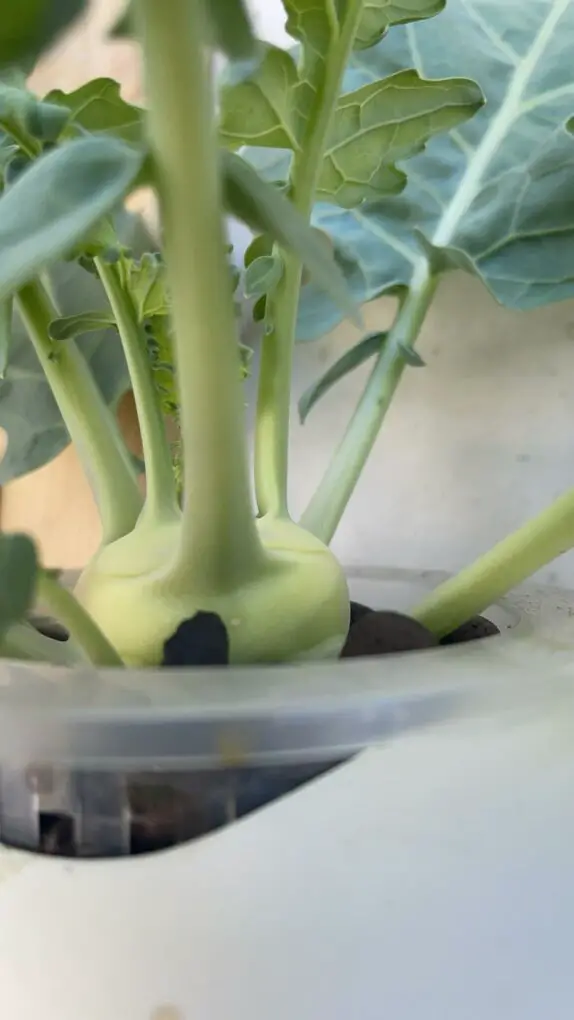
Lettuce
- Temperature range: 10-24°C (50-75°F)
- Lighting: 10-14 hours of bright light daily
- Days until harvest: 30-45 days
- Recommended pH level: 5.5-6.5
- Use: Lettuce is primarily eaten raw, used in salads, wraps, and as a garnish for various dishes.
- Read more: 20 types of lettuce to grow hydroponically

Celery
- Temperature range: 60-70°F (15.5-21°C)
- Lighting: 6-8 hours of bright, indirect light per day
- Days until harvest: 130-140 days
- Recommended pH level: 6.0-6.5
- Use: Primarily consumed raw in salads, snacks, and as a garnish, but also used cooked in soups and stews.
Spinach
- Temperature range: 60-70°F (15.5-21°C)
- Lighting: 10-12 hours of light per day
- Days until harvest: 40-45 days
- Recommended pH level: 6.0-7.0
- Use: Versatile, eaten both raw in salads and cooked in a variety of dishes.
Kale
- Temperature range: 60-75°F (15.5-24°C)
- Lighting: 10-12 hours of light per day
- Days until harvest: 55-65 days
- Recommended pH level: 5.5-6.5
- Use: Consumed both raw, often massaged in salads to soften, and cooked in dishes like soups and stews.
Arugula (Rocket)
- Temperature range: 50-65°F (10-18°C)
- Lighting: 8-10 hours of light per day
- Days until harvest: 30-40 days
- Recommended pH level: 6.0-6.5
- Use: Mostly eaten raw in salads for its peppery flavor, but can also be added to pizzas, pasta, and cooked dishes.
Collard Greens
- Temperature range: 60-75°F (15.5-24°C)
- Lighting: 10-12 hours of light per day
- Days until harvest: 60-75 days
- Recommended pH level: 6.0-6.8
- Use: Generally cooked, often stewed with meats or other vegetables, but can be used raw in salads when young and tender.
Conclusion
In conclusion, growing vegetables hydroponically offers a rewarding and accessible way to cultivate a wide variety of fresh produce at home. Whether you’re interested in leafy greens like lettuce and spinach or want to experiment with tomatoes, cucumbers, and other vegetables, hydroponic gardening provides a fun and easy solution. By harnessing the power of water and nutrients, you can enjoy the satisfaction of watching your plants thrive without the need for soil. With the versatility to grow indoors or outdoors, hydroponic systems offer endless opportunities for gardeners of all skill levels to get creative and enjoy the benefits of homegrown vegetables year-round. So why not dive in and start your own hydroponic garden today? It’s an enjoyable and fulfilling journey that promises delicious rewards at every harvest.
